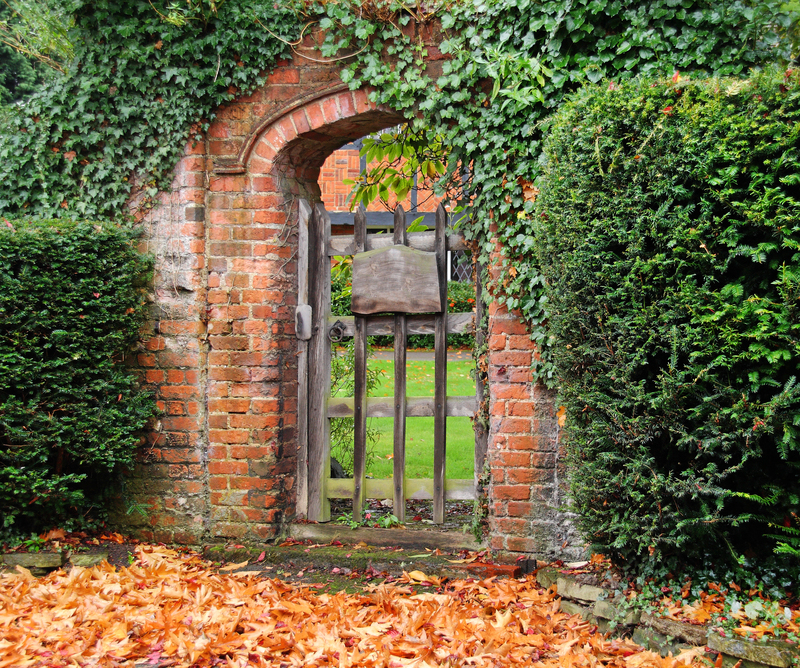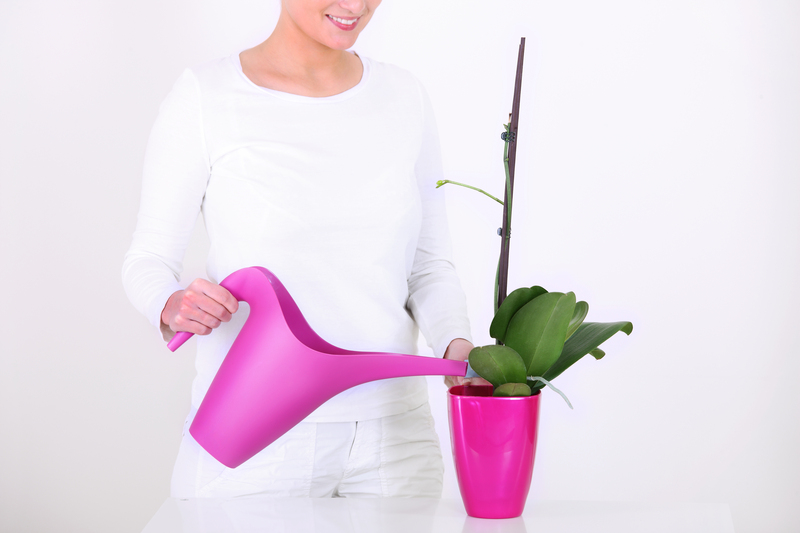Dog-friendly gardening: keeping harmony in nature
Posted on 16/08/2025
Dog-Friendly Gardening: Keeping Harmony In Nature
Gardening is a pursuit that brings peace, beauty, and a profound connection to the natural world. For dog owners, the yard is more than just a picturesque space--it's also an adventure ground and safe haven for their four-legged friends. Creating a dog-friendly garden isn't just about protecting your plants; it's about fostering a harmonious coexistence between your canine companions and the environment. In this comprehensive guide, we'll explore how dog-friendly gardening can help you maintain peace in nature, benefit your furry friend, and support a thriving, sustainable ecosystem.
Why Consider Dog-Friendly Gardening?
Many pet owners are unaware of the potential hazards lurking in their gardens. Toxic plants, sharp tools, and chemical pesticides can pose serious risks to dogs. Additionally, the energetic antics of dogs can wreak havoc on delicate flowerbeds and freshly-sown vegetable patches. Adopting dog-friendly gardening practices ensures:
- Safety for your dog: No toxic hazards or sharp objects.
- Preservation of garden beauty: Less damage to plants and beds.
- Healthy soil and ecosystem: Reduced reliance on harmful chemicals.
- Mutual enjoyment: You and your pet enjoy the outdoors together.

Understanding Your Dog's Needs in the Garden
Before you can create a harmonious dog and garden relationship, observe your pet's habits. Does your dog love to dig? Are they sunbathers or shade-seekers? Do they chase insects or lounge by the pond? Understanding your dog's temperament and behavior is key to designing a functional and safe garden.
Common Garden Behaviors in Dogs
- Burying or digging up objects
- Running along fence lines or favorite "doggy paths"
- Chewing on grass or plants
- Sunbathing or seeking cool spots to lie down
- Sniffing and exploring new scents
Identifying these patterns will help you tailor your garden layout for both your plants and your pet's delight.
Designing a Dog-Friendly Garden: Step by Step
1. Secure Boundaries
Your first concern should always be garden security. Install sturdy, dog-resistant fencing at an appropriate height to prevent escapes—and to keep wildlife out. Make sure there are no gaps or loose boards that can become dangerous for curious snouts.
2. Choose Non-Toxic Plants
Not all garden plants are safe for dogs. In fact, many popular ornamental species are toxic to pets. Familiarize yourself with these dangers:
- Lilies, azaleas, and foxglove can be deadly if ingested.
- Bulbs like tulips and daffodils often cause vomiting or worse symptoms.
- Tomato and potato plants contain solanine, which is harmful to dogs.
Instead, opt for dog-friendly garden plants such as:
- Sunflowers (Helianthus annuus)
- Marigolds (Tagetes)
- Snapdragons (Antirrhinum)
- Basil, rosemary, and thyme
- Camellias and fuchsias
Always consult with your veterinarian or a pet-friendly gardening resource if you are unsure about plant safety.
3. Avoid Harmful Chemicals
Eliminate the use of pesticides, herbicides, and chemical fertilizers, as dogs can absorb toxins by licking their paws after walking on treated areas. Instead, practice organic gardening by:
- Utilizing compost and mulch
- Introducing beneficial insects (like ladybugs) for pest control
- Using natural deterrents for weeds, such as vinegar or boiling water
For flea and tick control, choose pet-safe garden treatments or natural alternatives like diatomaceous earth.
4. Create Designated Digging and Play Zones
If your dog loves to dig, provide a separate area with soft soil or sand where digging is encouraged. Reward desired digging behavior in these zones to divert their energy away from your treasured flower beds.
- Bury favorite toys or treats to entice them.
- Use borders (such as logs, stones, or low fencing) to define dog play zones.
- Refresh digging areas regularly to maintain your dog's interest.
5. Sustainable Pathways and Resilient Plants
Dogs often create their own garden "race tracks" along perimeters or between favorite spots. Rather than constantly battling this instinct, lay down durable pathways made from:
- Mulch or bark
- Pea gravel
- Concrete stepping stones
Plant tough groundcovers like clover or creeping thyme around the paths, which can withstand paws and help reduce soil compaction.
6. Shady Retreats and Water Features
Offer places for your dog to cool off in the heat. Planting dog-safe shrubs near trees, or installing a shade sail, can create comfortable relaxation spots. Shallow water features, such as a dog pool or fountain, also provide fun and hydration for your pet.
7. Provide Visual Stimulation and Enrichment
Canines are naturally curious. Grow a garden your dog can explore by adding:
- Plants with interesting textures and gentle scents
- Tunnel-like spaces under sturdy shrubs
- Safe, interactive toys and enrichment objects
8. Safe Composting Practices
While compost is wonderful for plants, some materials (like coffee grounds, onions, grapes, or chocolate) are dangerous to dogs. Use closed compost bins and keep them secure from curious noses.
Dog-Resistant Plants: Best Choices For Your Eco-Friendly Pet Garden
Selecting dog-proof garden plants is crucial for achieving harmony between your pet and your plants. These species are known to be resilient to canine trampling and safe for curious chewers:
- Creeping Thyme: Hardy, low-growing, aromatic, and soft underfoot.
- Fescue Grass: Drought-tolerant and tough, making it ideal for running dogs.
- Lamb's Ear: Velvety leaves appeal to dogs and are non-toxic.
- Calendula: Cheerful flowers that withstand minor disturbances.
- Mint Family Plants: Hardy, fragrant, and safe for dogs to explore.
- Ornamental Oregano and Basil: Add color, fragrance, and are safe for nibbles.
Remember, even with dog-friendly landscaping, supervision is essential. Persistent chewers should be discouraged from ingesting large quantities of any plant.
Natural Pest Control: Encouraging Biodiversity
Adopting a dog- and wildlife-friendly garden philosophy means working with nature, not against it. To minimize pests without risking your dog's health:
- Welcome birds by providing baths or feeders. Many birds eat garden pests.
- Install bug hotels for beneficial insects like bees and ladybugs.
- Avoid rodenticides, which are often highly toxic to dogs and native wildlife.
- Plant a range of nectar-rich flowers to support pollinators.
- Encourage safe predators, such as frogs and toads, by adding log piles or pond margins.
Practical Tips For Maintaining Harmony in Your Dog-Friendly Yard
Establish Clear Boundaries
Train your dog to stay away from certain areas using positive reinforcement. Border flower beds with rocks, low fences, or raised edges, and allow your dog free rein in designated zones.
Routine Garden Inspections
Regularly check your garden for hazards, fallen fruit, unfamiliar mushrooms, or chewed plants. Remove any dangerous items immediately.
Supervise and Train
Especially with puppies, consistent supervision and gentle correction are key. Reward your dog for respecting garden boundaries.
Promote Responsible Waste Management
Dog waste can harbor pathogens and damage plants. Always scoop it promptly and dispose of safely. Avoid using dog waste in compost for edible crops.
Engage All Senses
Dogs appreciate gardens that stimulate all senses. Incorporate:
- Textured stepping stones and soft grasses for touch
- Breezy, aromatic herbs for scent
- Bells, wind chimes, or bubbling water features for auditory interest
The Impact of Dog-Friendly Gardens On Local Wildlife
A truly harmonious garden supports more than just you and your dog. By creating an eco-friendly, dog-safe yard, you're also providing sanctuary for bees, butterflies, birds, and small mammals. Here's how you can contribute to a balanced ecosystem:
- Grow native, pollen-rich flowers for pollinators.
- Provide small piles of rocks or logs for insects and amphibians.
- Install shallow dishes of water for wildlife, away from dog play areas.
- Let part of the lawn grow wild to offer habitat for insects.

Advice For Small Spaces and Urban Dog Owners
Even if you have a modest patio or balcony, you can still embrace dog-friendly gardening. Use sturdy containers for pet-safe plants, create a shady corner with a raised dog bed, and ensure all pots are anchored to prevent tipping. Remember to regularly water and inspect container plants for safety.
Conclusion: Fostering Harmony--For Dogs, Plants, and Nature
Dog-friendly gardening is not about compromise; it's about creativity and respect for life. By thoughtfully designing your yard or outdoor space, you can strike a beautiful balance between nature and your pet's needs. The end result is a vibrant garden that's safe for dogs and rich with wildlife—a true haven where everyone thrives.
Start your journey toward a harmonious, dog-friendly landscape today. Your garden—and your dog—will thank you!
FAQs About Dog-Friendly Gardening
-
Which common plants are toxic to dogs?
Lilies, tulips, daffodils, azaleas, foxglove, sago palm, and certain vegetables like tomatoes and potatoes should all be avoided. -
How do I stop my dog from digging in the garden?
Offer a designated digging spot, reward your dog for using it, and create physical barriers around vulnerable plants. -
Can dogs and wildlife really coexist in my garden?
Yes! Careful planting, responsible pet management, and nature-positive practices create space for all creatures. -
Is mulch safe for dogs?
Avoid cocoa mulch, which is toxic. Opt for pine, cedar, or rubber mulches and always monitor your dog to prevent ingestion.
For more resources on pet-friendly gardening, consult local horticultural societies and animal welfare organizations. Together, let's make gardens where harmony truly flourishes!



